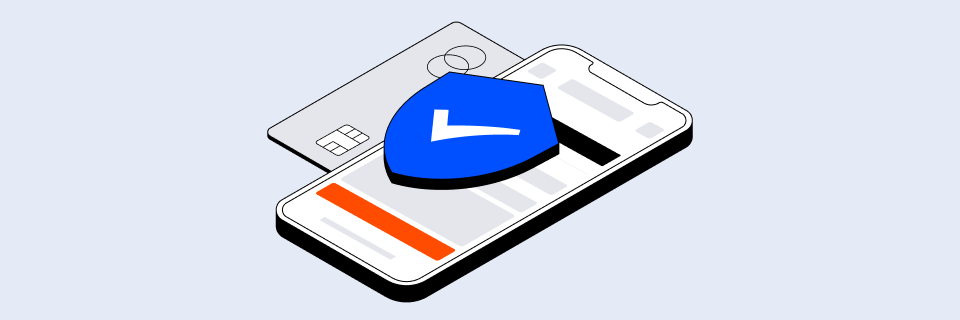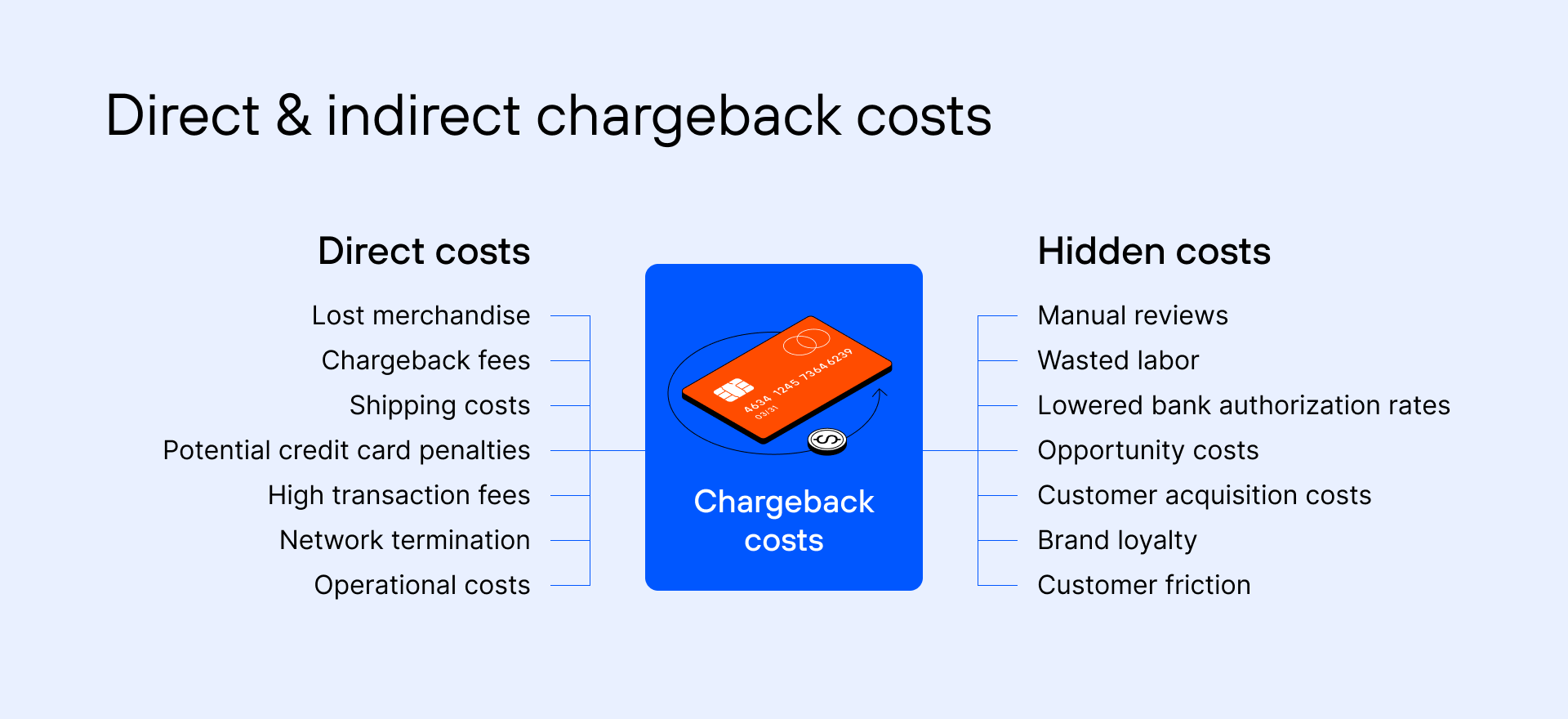Unique Chargeback Prevention Solution is Here
Chargebackhit aggregates all your alerts in one place where you are the decision maker
Learn more
If a company wants to avoid payment disputes and keep great customer relationships, chargeback prevention is the way. Merchants just need to find the best strategy for their business. In this regard, we will go through how to prevent chargebacks online, look at how they can impact the merchants’ revenue, and share details about the available tools.
Table of Contents
Chargeback at the client’s request is routine for issuing banks, but numerous occasions can lead to severe problems for the seller and their business. International payment systems (e.g., VISA, MasterCard, Amex, JCB, etc.) watch over the number of chargebacks a business receives. Exceeding the limit threatens the company with additional losses and getting denylisted by banks. Indeed, many entrepreneurs are asking how to avoid chargebacks and mitigate these risks, and our article aims to answer this very question.
It is a refund initiated by the client’s (issuing) bank. The procedure was initially intended to protect the buyer and ensure the security of online card payments. It differs from a regular refund, i.e., when the buyer contacts the seller to return the money due to a faulty product, long delivery time, etc.
The customer goes directly to their bank with a chargeback, skipping communication with the seller. Therefore, it is crucial to prevent chargebacks because if the issuing bank finds the arguments of its client convincing, it will write off the disputed amount from the seller’s account.
As stated by VISA, from March 2020 to March 2021, the number of payments on the Internet increased by 39%. The volume of online transactions is growing, increasing the number of chargebacks alongside. According to Solid research, approximately 0.15%-0.17% of all transactions on the Internet end up as chargebacks.
VISA and MasterCard recognize four chargeback categories: Fraud, Authorization, Processing Errors, and Customer Disputes. The most common reason, according to Visa, is fraud. It accounts for about 75% of forced returns. These are both transactions on a stolen card or account and friendly fraud – when a buyer deliberately misuses the dispute system or deceives the seller by trying to use a product or service for free.
It is challenging for banks and merchants to avoid chargebacks as there are few reliable technical methods to fight such fraud. This is why chargeback prevention is so crucial for companies. According to Visa and MasterCard, the volume of friendly fraud has snowballed over the past ten years.
Still, estimating the exact share of such transactions among other types of fraud is complicated. Situations fall into this category when a family member uses the card, but the cardholder does not want to pay for a brand’s purchased services or goods. For example, when children pay for Xbox games with their parents’ cards. Sometimes the client deliberately returns the money and keeps the goods or services.
Customer disputes comprise about 20% of all chargebacks. Most often, customers complain about the low quality of services or goods, problems with delivery or support, and the lack of transparency of regular write-offs on subscriptions.
Two more categories are authorization and processing errors, which take up to 5%. The share of these four categories may differ depending on the industry, region, or individual issuing banks. For example, in the United States, the volume of chargebacks due to consumer disputes reaches 30%, and in Latin America, its share is less than 10%.
Often, buyers turn to the bank for a refund when they are disappointed with a purchase from a brand or regret spending the money. Either they do not want to resolve the issue with the seller or expect the bank to return the money faster than the store. Another situation can occur when the period to settle the problem with the seller has passed. The client will then turn to the bank because the chargeback can be issued up to 120 days after the purchase.
Usually, issuing banks take the client’s side, especially in the United States. Firstly, because of the intense competition in the issuer market – no one wants to argue with the clients and question their statements. The second reason is the popularity of credit cards in the structure of the cards issued by the bank. If the payment is made against credit funds, the bank is interested in getting its money back as soon as possible. Banks also receive a commission for each chargeback.
Sometimes the user can forget about a purchase or fail to recognize the transaction by the payment description in the bank notification. In this case, the merchant can ask the alert provider to enable the Order Insight and Consumer Clarity services launched by VISA and MasterCard to prevent chargebacks. They allow real-time transmission of transaction details to managers of call centers of issuing banks or directly to banks’ mobile applications. Users can then press the button and recognize the purchase after seeing transaction details.
Online stores with high chargeback rates are considered unreliable by payment systems and should consider implementing a chargeback prevention strategy. Visa and MasterCard will be concerned if a business has more than 100 chargebacks per month, and together they comprise more than 0.9% of the total number of transactions.
It is always a problem for a business. Not only because of the transaction amount but also because the fee will be written off from the account. Often, the fees can be higher than the transaction itself when it comes to purchases under $30. In addition, a business with a growing number of chargebacks is receiving increased attention from the acquiring bank and payment systems. When the chargeback ratio is high, the system marks the company as a high-risk client. If a business cannot reduce this figure, it will end up on the MATCH list, an industry’s denylist, and the bank can close the seller’s account.
The only way to get off the list is to prove that the seller got there accidentally. For example, a sudden increase in the chargeback rate was associated with fraudulent actions of buyers. In practice, this isn’t easy, so it is better not to get denylisted. However, if the company is already marked as high-risk, the seller needs to reduce the chargeback ratio and get out of the monitoring program.

There are many crucial aspects to point out when answering the question of how to prevent chargeback. Foremost, it is crucial to understand the reasons underlying chargebacks. The acquiring bank must provide a breakdown by chargeback type for a particular company. Depending on which type prevails, the fighting strategy will be different.
Chargebackhit can help a company with its chargeback prevention service. Thanks to the Prevent solution, Chargebackhit can access data from the client’s order and share it with the bank. This way, a customer can have detailed information, recognize the transaction and end the dispute. If sellers want to reduce the level of fraudulent chargebacks, they need to focus on implementing some strategies that include:
In fact, numerous prevention methods can be found on the market to develop solid anti-fraud systems. For instance, a merchant can and should use cardholder identification tools to identify suspicious transactions, like AVS, CVV, 3DS2, and VAU.
An alert service is also a good option. This universal tool helps fight chargebacks because it notifies the seller that the customer is about to make one. Therefore, it allows the merchant to issue a refund quickly or reach out to the customer, thus preventing chargebacks.
But some alert services can provide more chargeback prevention products than others. Chargebackhit provides the latest technologies embedded in the issuing and acquiring banks and VISA payments network ecosystem. The latest product developed by VISA – Rapid Dispute Resolution (RDR) replaces chargebacks with a “pre-dispute” notice: an automatic refund to the user. It has no negative consequences for the seller.
The latest Visa / MasterCard technologies are not represented by all payment providers in Europe and the United States. Therefore, when choosing a partner, the seller should pay attention to the availability of such services. It will help the business track the number of chargebacks more effectively and avoid exceeding the threshold. Another big part of the chargeback prevention process is to combat friendly fraud efficiently. But challenging chargebacks have several drawbacks:
However, with cutting-edge technology and the right strategy in place, sellers can challenge chargebacks by proving that the customer’s chargeback is misplaced. For example, data about the buyer’s time on the website and their activity in the game or application can serve as evidence. Another option is information from delivery services about when and where goods were delivered.
And since we are speaking about delivery, let’s take a look at how important it is to have decent order communication. This is actually a specific issue regarding physical products. Clients like to follow every step of the process when they buy an item, so keep them updated from checkout until the delivery. To achieve this, sellers can use, for example, tracking numbers, as well as provide shipping and arrival dates.
The order fulfillment process isn’t the only internal matter that can significantly impact chargebacks. Organizations also need to deal with merchant errors. The good news is that they are preventable if merchants ensure there are no flaws in the procedures. For example, it is imperative to have clear policies that don’t give a chance to the client to complain without justification.
The last aspect to note is to have a well-developed marketing strategy that has transparency at its core. No false promises should be made, and product/service descriptions should be accurate, among many others.
Chargeback prevention is vital and finding the right tools to do it is essential. In fact, with more online transactions, more chargebacks have been reported. So, remember this: avoiding chargebacks is challenging. But it is more challenging without a good chargeback prevention service.
If you’re looking to lower your number of chargebacks, we’re here for you. Chargebackhit has three solutions for your issues with chargebacks: Prevent, Resolve and Recover.
When prevention is at the top of your priorities, Prevent is the technology that will help your company access all the data about the buying journey. This solution uses products such as Order Insight and Consumer Clarity so that you have all the purchase details in hand to send to the issuing bank and the client. Quickly intercept a dispute before it turns into a chargeback and prevent it from progressing with Chargebackhit’s Prevent tool.
Chargebackhit aggregates all your alerts in one place where you are the decision maker
Learn moreThank you
We've sent the whitepaper to your email.
Thank you
We will contact you shortly. If you have any further questions, please contact us at support@chargebackhit.com.
Thank you
We will contact you shortly. If you have any further questions, please contact us at support@chargebackhit.com.
Thank you
We will contact you shortly. If you have any further questions, please contact us at support@chargebackhit.com.